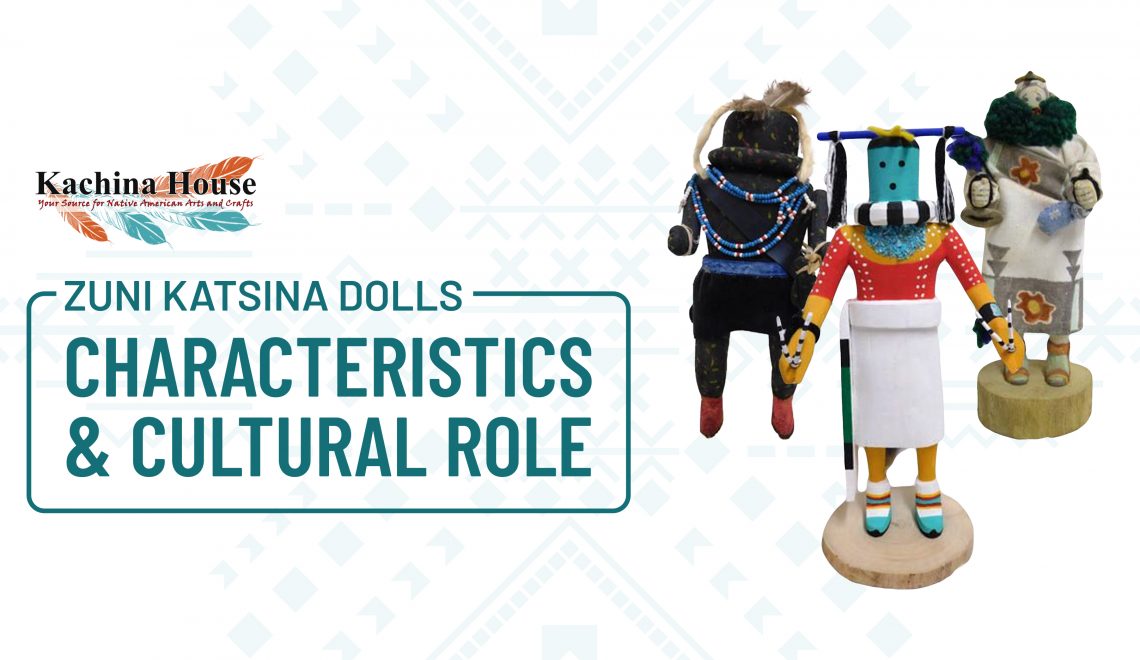
Zuni Katsina dolls hold a deep spiritual significance, representing powerful beings that participate in Zuni ceremonies. Like the Hopi Katsina dolls, Zuni Katsina dolls are used as teaching tools to help younger generations learn about spiritual traditions. Zuni Katsina dolls have their own unique characteristics in terms of carving style and decoration.
What Are Zuni Katsina Dolls?
Zuni Katsina dolls represent spiritual beings who embody life forces, much like the Hopi Katsina dolls. These dolls are traditionally carved from cottonwood root and are used to teach younger generations about the cultural and spiritual practices of the Zuni people. While Zuni Katsina dolls are often less intricate than their Hopi counterparts, they serve as a vital educational tool, reflecting the spiritual life of the Zuni community. These dolls are adorned with decorative elements, emphasizing clothing and accessories, while the Hopi full-figure dolls are generally only wood and paint.
How Are Zuni Katsina Dolls Traditionally Used?
Zuni Katsina dolls, like Hopi Katsina dolls, are representations of spiritual beings used as teaching tools. Given to children, these dolls help familiarize them with the Katsina songs, dances, and spiritual lessons. While the Hopi have a long tradition of intricate carving, the Zuni carvers place more emphasis on the ceremonial attire, featuring detailed feathers and clothing rather than elaborate carving. Zuni Katsina dolls are displayed in homes as reminders of the spiritual beings that guide their community and bring blessings.
How Are Zuni Katsina Dolls Different From Hopi Katsina Dolls?
Despite their shared purpose as teaching tools, Zuni and Hopi Katsina dolls differ in their artistic approach and cultural context:
- Artistic Style: Hopi Katsina dolls are known for their intricate carving, reflecting a high level of detail in the figures and their ceremonial attire. In contrast, Zuni Katsina dolls are more simplistic in form and emphasize intricate clothing and decorative feathers. This reflects the Zuni focus on ceremonial attire rather than complex figure carving.
- Cultural Use: Both Zuni and Hopi Katsina dolls are used to educate children about spiritual beings. However, Zuni Katsina dolls are less ceremonial and more focused on everyday teaching. Hopi Katsina dolls, by contrast, are often used in large community-wide ceremonies and hold a broader ceremonial role within the Hopi community.
- Symbolism: Both Zuni and Hopi Katsina dolls symbolize life forces, with figures embodying rain, corn, and other elements essential to life. These figures serve as metaphors for life itself, guiding the community with moral lessons and blessings
The Legacy of Zuni and Hopi Katsina Dolls
The impact of Katsina dolls, both Zuni and Hopi, extends beyond their communities. By the late 19th and early 20th centuries, these dolls became part of a flourishing trade with the outside world. While originally carved for community use, they eventually became popular as collectible items in Western art markets. The simplicity of Zuni dolls and the intricacy of Hopi carvings demonstrate the versatility and creativity within these Native American traditions, reflecting how the art has evolved while maintaining its cultural integrity.
Explore Authentic Zuni Katsina Dolls at Kachina House
While we specialize in Hopi Katsina Dolls, we also feature the work of Zuni artists, such as Felino Eriacho and Stephen Comosono, who bring the art of Zuni doll carving to life. We invite you to browse our collection and discover these unique pieces, each reflecting the spiritual depth and craftsmanship of the Zuni tradition.


Hello! I love this website. So much information!!!
I am not a Native American but I have carved several Kachina dolls and I love them. I carved them for my personal collection and they are not for sale. I carved these dolls from cottonwood roots and my supplier is no longer active. I would like to know where to buy cottonwood roots if anyone knows please let me know. I am not interested in the bark though.
Thank you!!